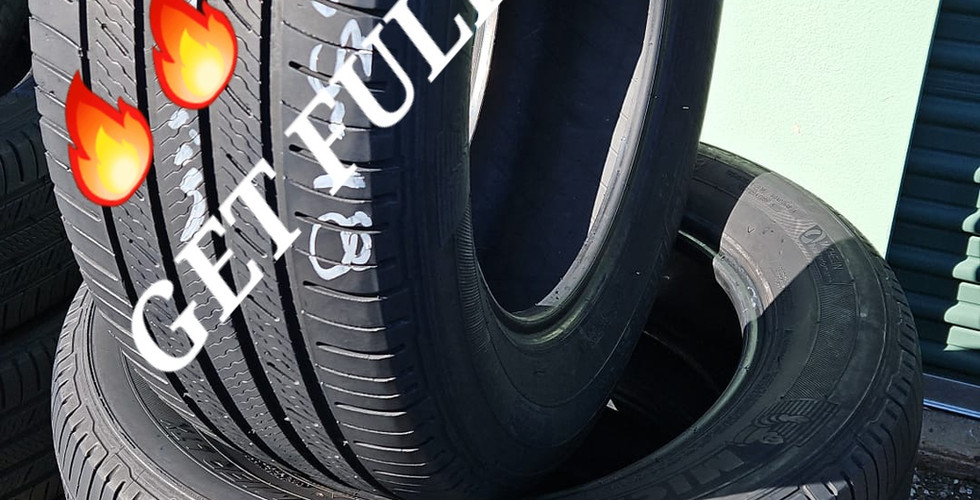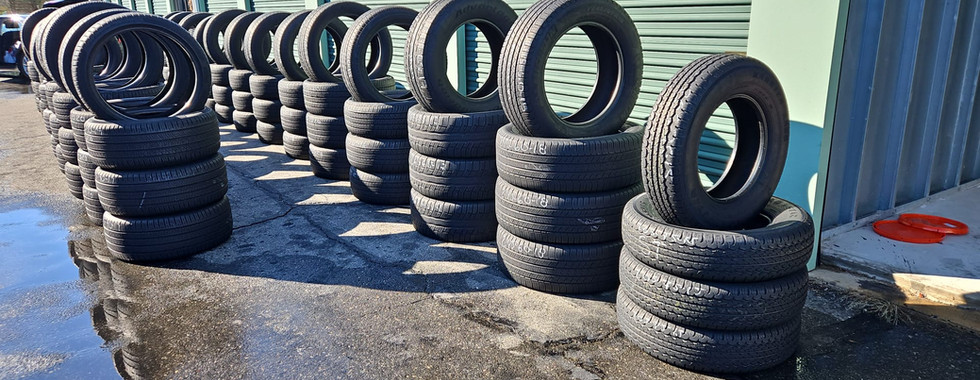Top 10 Tips for Purchasing Used Tires
- Jesica Gazali
- Apr 29, 2024
- 5 min read

Are you in the market for used tires but unsure where to start? Look no further! In this detailed guide, we will walk you through everything you need to know about purchasing pre-owned tires, from inspecting tread depth to checking for age and condition. Whether you're a budget-conscious driver or simply looking for a good deal, this guide is your go-to resource for buying quality used tires.
A Comprehensive Guide to Buying Used Tires: Tips and Tricks

Importance of Tread Depth
Hey everyone, let's talk about the importance of tread depth when it comes to buying used tires. It's a crucial aspect that often gets overlooked but plays a significant role in the performance and safety of your vehicle.
When you're in the market for used tires, one of the first things you should consider is the tread depth. Why is this important? Well, the tread on your tires is what provides traction and grip on the road surface. As tires wear down, the depth of the tread decreases, affecting their ability to channel water away and maintain contact with the road.
So, how do you measure tread depth? It's actually quite simple. You can use tools like a penny or a tread depth gauge. With a penny, you can perform a quick test by inserting it into the tread grooves with Lincoln's head facing down. If you can see the top of Lincoln's head, it's time to replace the tire. Alternatively, a tread depth gauge provides a more precise measurement, indicating whether the tread is within safe limits.
Low tread depth can have serious implications on tire performance and safety. As the tread wears down, the tire's ability to grip the road diminishes, especially in wet or slippery conditions. This can lead to longer stopping distances, reduced handling, and an increased risk of hydroplaning. In essence, tires with inadequate tread depth compromise your safety on the road.
When buying used tires, always pay attention to the tread depth to ensure you're getting tires that still have sufficient life left in them. Don't overlook this critical factor, as it directly impacts how your vehicle handles various road conditions and ultimately keeps you safe behind the wheel.

Understanding Tire Age
Hey everyone, in this section, I want to delve into the importance of understanding tire age and how it can impact your driving experience and safety on the road. Let's explore why tire age matters and how you can determine the manufacturing date of a tire to make informed decisions when it comes to your vehicle's tires.
Why Tire Age Matters
When it comes to tires, age is just as critical as tread depth and tire condition. Over time, tires can deteriorate even if they have plenty of tread left. Understanding the age of your tires can help you avoid potential risks and ensure optimal performance.
Determining Manufacturing Date
One way to determine the manufacturing date of a tire is by looking at the DOT code. The last four digits of this code indicate the week and year of production. By checking this code, you can easily identify how old a tire is and whether it's time for a replacement.
Recommended Lifespan of Tires
Manufacturers typically recommend replacing tires every six years, while the National Highway Safety Administration suggests a maximum lifespan of ten years. Factors such as heat cycling, exposure to the elements, and proper maintenance can all impact the longevity of your tires.
Factors Impacting Tire Longevity
Several factors can affect the lifespan of your tires, including driving habits, road conditions, tire maintenance, and climate. By understanding these factors, you can take proactive steps to extend the life of your tires and ensure your safety on the road.
Risks of Using Old Tires
Using old or expired tires can pose serious risks, including reduced traction, increased risk of blowouts, and compromised handling. It's essential to regularly inspect your tires for signs of aging, such as cracks, bulges, or uneven wear, and replace them when necessary to avoid potential accidents.
By being aware of the age of your tires, following recommended guidelines for tire replacement, and staying vigilant about tire maintenance, you can drive with confidence knowing that your tires are in optimal condition. Remember, safety always comes first on the road!
Inspecting Tire Condition
When it comes to buying used tires, one of the most critical aspects is inspecting their condition thoroughly. In this section, I'll guide you through the process of visually examining a used tire for signs of wear, damage, or defects. Let's dive into the world of tire inspection and learn how to make informed decisions when purchasing pre-owned tires.
Discovering Signs of Wear and Damage
As we approach a used tire, the first thing that catches my eye is the tread. The tread depth is a crucial indicator of a tire's condition. A worn-out tread not only compromises safety but also affects the tire's performance. I check for any signs of uneven wear, bald spots, or excessive wear on the edges, indicating possible alignment issues.
Next, I focus on common issues such as sidewall cracks, punctures, and bulges. Sidewall cracks are a red flag, as they can weaken the tire's structure and lead to blowouts. Punctures, if not properly repaired, can compromise the tire's integrity. Bulges or bubbles on the sidewall indicate internal damage and should be avoided.
Using Soap and Water for Hidden Defects
One neat trick I've learned is using soap and water to identify hidden tire defects. By spraying a mixture of soap and water on the tire surface, I observe for any air bubbles forming. These bubbles can indicate leaks, cracks, or other hidden issues that may not be visible during a visual inspection.
Inspecting the tire thoroughly is essential to ensure its safety and longevity. By paying attention to these visual cues, you can make an informed decision when considering a used tire purchase.
Inspecting Tire Condition is Crucial
Inspecting tire condition is a crucial step in the process of buying used tires. By understanding how to visually inspect a tire for wear, damage, and defects, you can make a well-informed decision and ensure your safety on the road. Remember to check the tread depth, look for common issues like sidewall cracks, and use the soap and water trick to reveal hidden defects. With these tips in mind, you'll be better equipped to choose quality used tires that meet your needs.
Expert Advice on Finding Quality Used Tires
As we wrap up our discussion on purchasing used tires, let's recap some essential tips to keep in mind when venturing into the world of pre-owned tires. Buying used tires can be a cost-effective way to maintain your vehicle, but it's crucial to approach the process with caution and knowledge.
One of the first steps in purchasing used tires is to seek expert advice on where to find quality options at affordable prices. Whether you're exploring local tire shops, online marketplaces, or specialized tire dealers, it's essential to gather insights from professionals who understand the nuances of used tire quality.
If you are in the New Jersey state, and in the area of Roselle, Cranford, Linden, Elizabeth, Union, Rahway, Clark, or Hillside. New Jersey then give us a call and let us take the worry and headache out of used tire shopping.
We've taken the time to research, verify the history of everyone of our used tires. We understand= the age of the tires, their previous usage, and any potential issues to avoid any unpleasant surprises down the road.
We don't just prioritize your budget but your safety on the road and if we wouldn't put them on our car, we won't put them on yours.
Follow us on instagram or join our newsletter to always get the latest tips and tricks in the industry and stay ahead of the curve and above the curb.
Safe driving,
JNJ Team















































Comments